 W
WVirginia Dare Aderholdt was an Arlington Hall cryptanalyst and Japanese translator, who decrypted the intercepted Japanese surrender message, August 14, 1945.
 W
WMohamed M. Atalla was an Egyptian-American engineer, physical chemist, cryptographer, inventor and entrepreneur. He was a semiconductor pioneer who made important contributions to modern electronics. He is best known alongside Dawon Kahng for the invention of the MOSFET in 1959, along with his earlier surface passivation and thermal oxidation processes, revolutionized the electronics industry. He is also known as the founder of the data security company Atalla Corporation, founded in 1972. He received the Stuart Ballantine Medal and was inducted into the National Inventors Hall of Fame for his important contributions to semiconductor technology as well as data security.
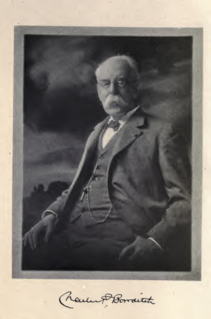 W
WCharles Pickering Bowditch was an American financier, archaeologist, cryptographer and linguistics scholar who specialized in Mayan epigraphy.
 W
WDavid Brumley is a Professor at Carnegie Mellon University. He is a well-known researcher in software security, network security, and applied cryptography. Prof. Brumley also worked for 5 years as a Computer Security Officer for Stanford University.
 W
WMatthew Bucksbaum was an American businessman and philanthropist. Matthew and his brothers Martin and Maurice co-founded General Growth Properties.
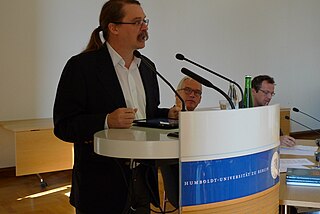 W
WJon Callas is an American computer security expert, software engineer, user experience designer, and technologist who is the co-founder and former CTO of the global encrypted communications service Silent Circle. He has held major positions at Digital Equipment Corporation, Apple, PGP, and Entrust, and is considered "one of the most respected and well-known names in the mobile security industry." Callas is credited with creating several Internet Engineering Task Force (IETF) standards, including OpenPGP, DKIM, and ZRTP, which he wrote. Prior to his work at Entrust, he was Chief Technical Officer and co-founder of PGP Corporation and the former Chief Technical Officer of Entrust.
 W
WRosario Candela was a Sicilian American architect who achieved renown through his apartment building designs in New York City, primarily during the boom years of the 1920s. He is credited with defining the city's characteristic terraced setbacks and signature penthouses. Over time, Candela's buildings have become some of New York's most coveted addresses. As architectural historian Cristopher Gray has written: "Rosario Candela has replaced Stanford White as the real estate brokers' name-drop of choice. Nowadays, to own a 10- to 20-room apartment in a Candela-designed building is to accede to architectural as well as social cynosure."
 W
WAnn Zeilinger Caracristi was an American cryptanalyst, former Deputy Director of the National Security Agency, where she served at various positions over a 40-year career. She served as a member of the Secretary of Defense Joint Security Commission and President's Foreign Intelligence Advisory Board. She became the first woman at NSA to be promoted to GS-18 rank, in 1975, when she became the Chief of Research and Operations.
 W
WWilma Zimmerman Davis was an early American codebreaker during World War II. She was a leading national cryptanalyst before and during World War II and the Vietnam War. She graduated with a degree in Mathematics from Bethany College and successfully completed navy correspondence course in cryptology. She began her career as a leading cryptanalyst which spanned over 30 years in the United States Army Signal Intelligence Service (SIS), a predecessor of the National Security Agency (NSA) in the 1930s. She was hired by William Friedman, who was a US cryptographer in the Army and led the research division of the Army’s Signal Intelligence in the 1930s. Wilma Davis worked as a cryptanalyst on the Italian, Japanese, Chinese, Vietnamese, and Russian problems. She also worked on the VENONA project.
 W
WEdward H. "Ned" Deets III is a retired Rear Admiral in the United States Navy. A cryptology and information warfare specialist, Deets was the senior Information Warfare Officer (IWO) in the Navy..
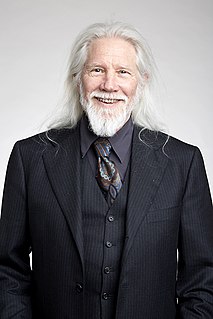 W
WBailey Whitfield 'Whit' Diffie, ForMemRS, is an American cryptographer and one of the pioneers of public-key cryptography along with Martin Hellman and Ralph Merkle. Diffie and Hellman's 1976 paper New Directions in Cryptography introduced a radically new method of distributing cryptographic keys, that helped solve key distribution—a fundamental problem in cryptography. Their technique became known as Diffie–Hellman key exchange. The article stimulated the almost immediate public development of a new class of encryption algorithms, the asymmetric key algorithms.
 W
WAgnes Meyer Driscoll, known as "Miss Aggie" or "Madame X'", was an American cryptanalyst during both World War I and World War II.
 W
WCynthia Dwork is an American computer scientist at Harvard University, where she is Gordon McKay Professor of Computer Science, Radcliffe Alumnae Professor at the Radcliffe Institute for Advanced Study, and Affiliated Professor, Harvard Law School and Harvard's Department of Statistics. She is a distinguished scientist at Microsoft Research.
 W
WDr. Taher Elgamal is an Egyptian cryptographer and entrepreneur. He is recognized as the "father of SSL" for the work he did in computer security while working at Netscape, which helped in establishing a private and secure communications on the Internet.
 W
WJoseph Finnegan was a United States Navy linguist and cryptanalyst with Station Hypo during the Second World War.
 W
WDr. Lowell K. (Jim) Frazer was a mathematician who worked for the National Security Agency (NSA) in the field of cryptography.
 W
WElizebeth Smith Friedman was an American expert cryptanalyst and author. She has been called "America's first female cryptanalyst".
 W
WWilliam Frederick Friedman was a US Army cryptographer who ran the research division of the Army's Signal Intelligence Service (SIS) in the 1930s, and parts of its follow-on services into the 1950s. In 1940, subordinates of his led by Frank Rowlett broke Japan's PURPLE cipher, thus disclosing Japanese diplomatic secrets before America's entrance into World War II.
 W
WAndrew Mattei Gleason (1921–2008) was an American mathematician who made fundamental contributions to widely varied areas of mathematics, including the solution of Hilbert's fifth problem, and was a leader in reform and innovation in mathematics teaching at all levels. Gleason's theorem in quantum logic and the Greenwood–Gleason graph, an important example in Ramsey theory, are named for him.
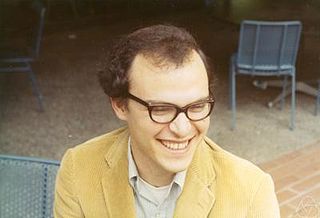 W
WDavid M. Goldschmidt is an American mathematician specializing in group theory.
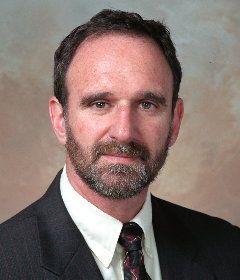 W
WMartin Edward Hellman is an American cryptologist, best known for his invention of public key cryptography in cooperation with Whitfield Diffie and Ralph Merkle. Hellman is a longtime contributor to the computer privacy debate, has applied risk analysis to a potential failure of nuclear deterrence, and in 2016 wrote a book with his wife, Dorothie Hellman, that links creating love at home to bringing peace to the planet.
 W
WBankson Taylor Holcomb Jr. was a decorated officer of the United States Marine Corps with the rank of brigadier general. He is most noted for his service as cryptanalyst and Linguist for Admirals Halsey and Spruance during the Pacific War or as Intelligence Officer of the 1st Marine Division during the Korean War. He was also a cousin of Commandant of the Marine Corps General Thomas Holcomb.
 W
WYael Tauman Kalai is a cryptographer and theoretical computer scientist who works as a Senior Principal Researcher at Microsoft Research New England and as an Adjunct Professor at MIT in the Computer Science and Artificial Intelligence Lab.
 W
WSolomon Kullback was an American cryptanalyst and mathematician, who was one of the first three employees hired by William F. Friedman at the US Army's Signal Intelligence Service (SIS) in the 1930s, along with Frank Rowlett and Abraham Sinkov. He went on to a long and distinguished career at SIS and its eventual successor, the National Security Agency (NSA). Kullback was the Chief Scientist at the NSA until his retirement in 1962, whereupon he took a position at the George Washington University.
 W
WAlva Bryan "Red" Lasswell was a United States Marine Corps linguist and cryptanalyst during World War II. In 1942, he contributed to the identification of Midway Atoll as the Japanese military target codenamed AF. In April 1943, Lasswell helped decrypt the coded itinerary of Admiral Isoroku Yamamoto, leading to his interception by Army Air Forces fighter planes near Rabaul.
 W
WRichard A. Leibler was an American mathematician and cryptanalyst. Richard Leibler was born in March 1914. He received his A.M. in mathematics from Northwestern University and his Ph.D. from the University of Illinois in 1939. While working at the National Security Agency, he and Solomon Kullback formulated the Kullback–Leibler divergence, a measure of similarity between probability distributions which has found important applications in information theory and cryptology. Leibler is also credited by the NSA as having opened up "new methods of attack" in the celebrated VENONA code-breaking project during 1949-1950; this may be a reference to his joint paper with Kullback, which was published in the open literature in 1951 and was immediately noted by Soviet cryptologists.
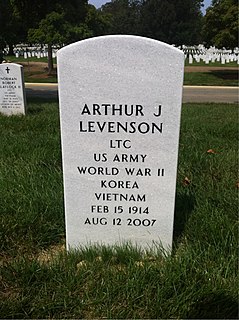 W
WArthur J. Levenson was a cryptographer, United States Army officer and NSA official who worked on the Japanese J19 and the German Enigma codes.
 W
WMichael George Luby is a mathematician and computer scientist, CEO of BitRipple, Senior Research Scientist at the International Computer Science Institute (ICSI), former VP Technology at Qualcomm, co-founder and former Chief Technology Officer of Digital Fountain. In coding theory he is known for leading the invention of the Tornado codes and the LT codes. In cryptography he is known for his contributions showing that any one-way function can be used as the basis for private cryptography, and for his analysis, in collaboration with Charles Rackoff, of the Feistel cipher construction. His distributed algorithm to find a maximal independent set in a computer network has also been very influential. He has also contributed to average-case complexity.
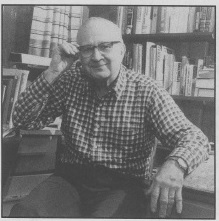 W
WWilliam Lutwiniak was an American crossword constructor who was also known for his work as a cryptologist with the National Security Agency. He composed a total of 8,413 puzzles; his first five thousand were composed between 1965 and 1985, as a hobby.
 W
WIn September 1960, two U.S. National Security Agency (NSA) cryptologists, William Hamilton Martin and Bernon F. Mitchell, defected to the Soviet Union. A secret 1963 NSA study said that: "Beyond any doubt, no other event has had, or is likely to have in the future, a greater impact on the Agency's security program."
 W
WRalph C. Merkle is a computer scientist. He is one of the inventors of public key cryptography, the inventor of cryptographic hashing, and more recently a researcher and speaker on cryonics.
 W
WPeter Lawrence Montgomery was an American mathematician who worked at the System Development Corporation and Microsoft Research. He is best known for his contributions to computational number theory and mathematical aspects of cryptography, including the Montgomery multiplication method for arithmetic in finite fields, the use of Montgomery curves in applications of elliptic curves to integer factorization and other problems, and the Montgomery ladder, which is used to protect against side-channel attacks in elliptic curve cryptography.
 W
WWilliam Romaine Newbold was an American philosopher who held the Adam Seybert Professor of Intellectual and Moral Philosophy chair at the University of Pennsylvania from 1907 to 1926. Newbold was noted for his lectures and writings on Theological Psychology, Christian Gnosticism and Cryptography.
 W
WHelen Lucile Nibouar was an American cryptographer who was part of the select group who first worked on the SIGABA cipher device during World War II. She was honored by the National Security Agency's National Cryptologic Museum in 2012 for her role in "60 Years of Cryptologic Excellence".
 W
WLandon Curt Noll is an American computer scientist, co-discoverer of the 25th Mersenne prime and discoverer of the 26th, which he found while still enrolled at Hayward High School and concurrently at California State University, Hayward.
 W
WRonald Linn Rivest is a cryptographer and an Institute Professor at MIT. He is a member of MIT's Department of Electrical Engineering and Computer Science (EECS) and a member of MIT's Computer Science and Artificial Intelligence Laboratory (CSAIL). His work has spanned the fields of algorithms and combinatorics, cryptography, machine learning, and election integrity.
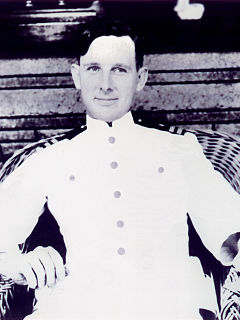 W
WJoseph John Rochefort was an American naval officer and cryptanalyst. He was a major figure in the United States Navy's cryptographic and intelligence operations from 1925 to 1946, particularly in the Battle of Midway. His contributions and those of his team were pivotal to victory in the Pacific War.
 W
WFrank Byron Rowlett was an American cryptologist.
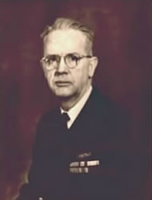 W
WCaptain, U.S.N. Laurance Frye Safford was a U.S. Navy cryptologist. He established the Naval cryptologic organization after World War I, and headed the effort more or less constantly until shortly after the Japanese attack on Pearl Harbor. His identification with the Naval effort was so close that he was the Friedman of the Navy.
 W
WBruce Schneier is an American cryptographer, computer security professional, privacy specialist and writer. Schneier is a Lecturer in Public Policy at the Harvard Kennedy School and a Fellow at the Berkman-Klein Center for Internet & Society. He is a board member of the Electronic Frontier Foundation, AccessNow, and the Tor Project; and an advisory board member of EPIC and VerifiedVoting.org. Schneier is currently employed as the Chief of Security Architecture at Inrupt, Inc. in Boston, MA. He is the author of several books on general security topics, computer security and cryptography and a squid enthusiast.
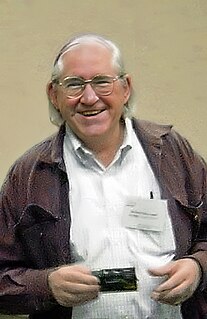 W
WRichard C. Schroeppel is an American mathematician born in Illinois. His research has included magic squares, elliptic curves, and cryptography. In 1964, Schroeppel won first place in the United States among over 225,000 high school students in the Annual High School Mathematics Examination, a contest sponsored by the Mathematical Association of America and the Society of Actuaries. In both 1966 and 1967, Schroeppel scored among the top 5 in the U.S. in the William Lowell Putnam Mathematical Competition. In 1973 he discovered that there are 275,305,224 normal magic squares of order 5. In 1998–1999 he designed the Hasty Pudding Cipher which was a candidate for the Advanced Encryption Standard, and he is one of the designers of the SANDstorm hash, a submission to the NIST SHA-3 competition.
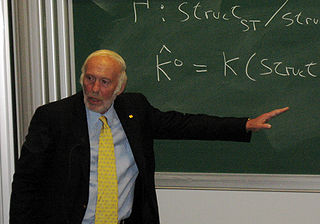 W
WJames Harris Simons is an American mathematician, billionaire hedge fund manager, and philanthropist. He is the founder of Renaissance Technologies, a hedge fund based in Setauket-East Setauket, New York. He and his fund are known to be quantitative investors, using mathematical models and algorithms to make investment gains from market inefficiencies. Due to the long-term aggregate investment returns of Renaissance and its Medallion Fund, Simons is described as the "greatest investor on Wall Street". As reported by Forbes, his net worth is estimated to be $23.5 billion, making him the 24th-richest person in the United States.
 W
WPhilip R. Zimmermann is an American computer scientist and cryptographer. He is the creator of Pretty Good Privacy (PGP), the most widely used email encryption software in the world. He is also known for his work in VoIP encryption protocols, notably ZRTP and Zfone. Zimmermann is co-founder and Chief Scientist of the global encrypted communications firm Silent Circle.